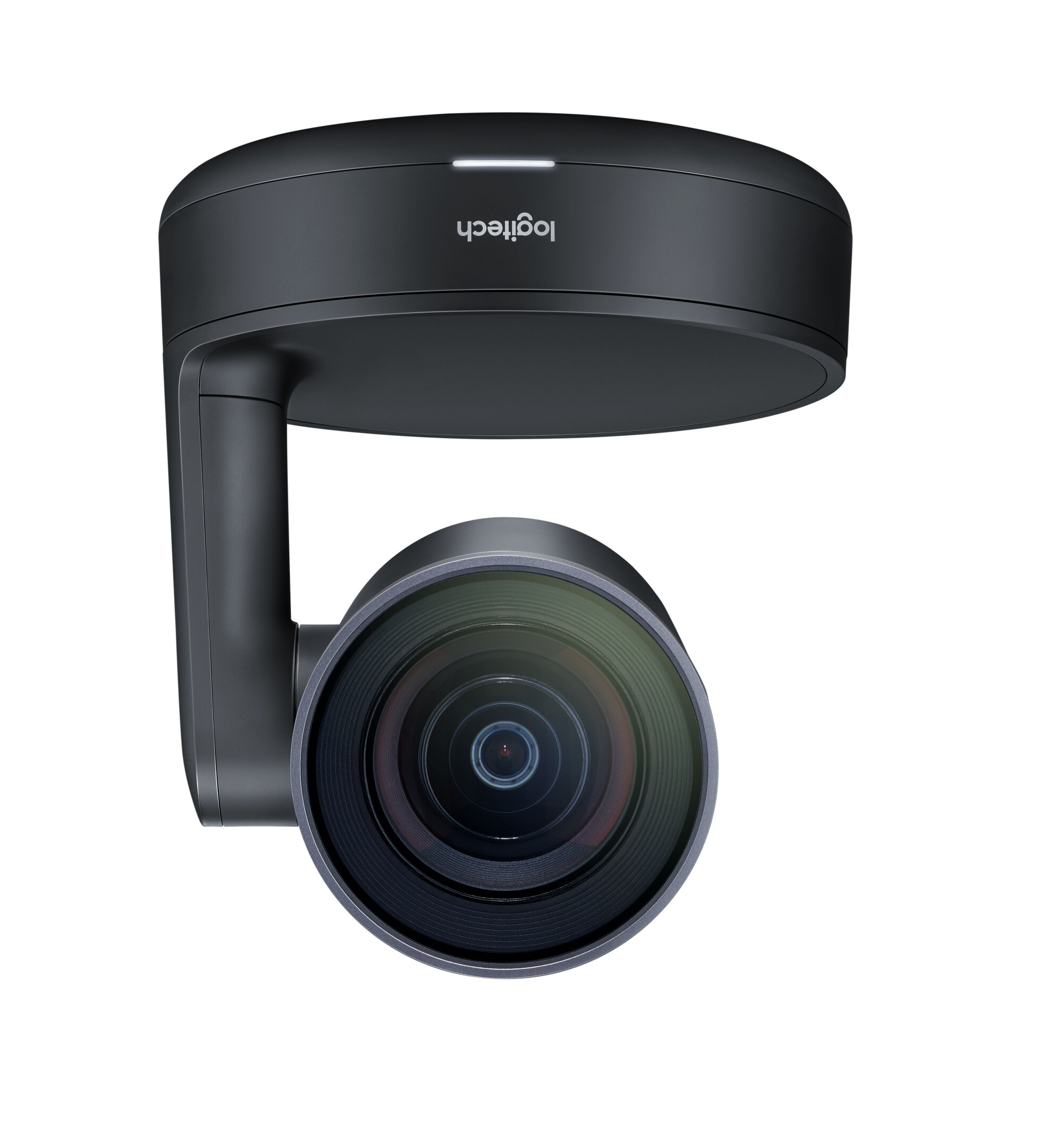































£765.34*
£8.99
- Application Large Rooms, Medium Rooms
- Resolution 3840 x 2160 4K UHD
- Focus type Manual & automatic focus
- Frames per Second 60 fps


Frequently purchased together
Product information
RALLY CAMERA
Premium PTZ camera with Ultra-HD imaging system andautomatic camera control
- RightSense™ technology automates a better user experience
- Advanced optics frame every participant with amazing clarity
- Sleek industrial design for any professional meeting space
PEERLESS PERFORMANCE. EXCEPTIONAL VERSATILITY.
With premium industrial design and an Ultra-HD imagingsystem, Rally Camera tops the lineup of standalone video cameras fromLogitech®. Packed with advanced optics and breakthrough technologies, RallyCamera delivers premium performance in professional meeting spaces of allshapes and sizes. With whisper-quiet mechanical Pan/Tilt/Zoom, razor-sharp 15XHD zoom, expansive 90° diagonal field of view, and powerful 4K sensor, RallyCamera captures every person in the room with truly phenomenal video quality.
STUDIO-QUALITY VIDEO
With an Ultra-HD imaging system, Rally Camera deliversbrilliantly sharp video, outstanding colour, and exceptional optical accuracyat resolutions up to 4K. Logitech RightLight™ technology optimises lightbalance to emphasise faces and render natural-looking skin tones, even in dimor backlit conditions.
SLEEK INDUSTRIAL DESIGN
Rally Camera incorporates world-class Logitech optics and 4Ksensor in a premium industrial design suitable for any professional setting.Elegantly finished in matte black with slate gray metal trim, Rally Camera canbe positioned on a table, mounted on a tripod, or secured to a wall withincluded hardware. For overhead installations, the camera detects when it’sinverted and automatically corrects image orientation and camera controls.
SEE EVERYONE, PERFECTLY FRAMED
Logitech RightSight™ camera control automatically moves andadjusts the lens to comfortably frame meeting participants in rooms of allshapes and sizes.
ENHANCED USER EXPERIENCE
Logitech RightSense™ is a suite of proactive technologiesbuilt into Rally Camera that automate a better user experience. RightSight™automates camera control to perfectly frame participants, no matter theirdistance from the lens. RightLight™ optimises light balance and prioritisesfaces over objects and surfaces to render natural-looking skin tones. Plus,Rally Camera is compatible with virtually any video conferencing app right outof the box.
PRIVACY ASSURANCE
When Rally Camera is not in use, the lens defaults to aparked position where the lens is pointed straight down. This provides visualaffirmation that the camera is unable to “see” anything in the meeting spacewhen idle. The lens lifts to a preset position when joining a meeting and parksautomatically when the meeting ends. In addition, whenever video is mutedduring a meeting, a status light illuminates red to affirm visual privacy.
AUTOMATIC CAMERA CONTROL
Logitech RightSight™ camera control technology automaticallymoves and adjusts the lens to comfortably frame meeting participants in roomsof all shapes and sizes. Enjoy hands-free convenience or take manual control:participants are always in view and optimally pictured on-screen.
LIGHT/COLOUR OPTIMISATION
Logitech RightLight™ technology with Wide Dynamic Range(WDR) prioritises faces over objects and surfaces, optimises light balance, andfine-tunes colour and saturation for natural results across all skin tones. Theresult is a balanced image that renders participants in flattering light withreduced glare and softer shadows, even in dim or backlit conditions.
ADAPTIVE PAN, TILT AND ZOOM
Whisper-quiet mechanical PTZ motor adjusts pan and tiltspeed with the amount of zoom. The result: Faster camera movement when zoomedout for quick framing and slower camera movement when zoomed in for morecontrol.
MULTIPLE INSTALLATION OPTIONS
Position Rally Camera on a table, wall mount with includedhardware, or attach to a VESA-compatible display with the optional TV Mount forMeetUp. For ceiling installations, Rally Camera detects when it’s inverted andautomatically corrects the image orientation and camera controls. Rally Cameraalso includes a standard tripod thread for added flexibility.
4K RECORDING AND STREAMING
Rally Camera packs a 13-megapixel image sensor that capturesup to 4K video at up to 30 frames per second, ideal for Ultra HD recording andstreaming. The advanced 4K imaging system delivers spectacular quality at allHD and Ultra HD resolutions with brilliantly sharp video, outstanding colourreproduction, and exceptional optical accuracy.
PLUG-AND-PLAY EASY
Simply connect to power (regional plugs included) and to PC,Mac and Chrome™ devices via USB. Rally Camera is UVC/plug-and-play compatiblewith virtually any video conferencing, recording, and broadcasting applicationthat supports USB cameras.
Technical data
| Name | Logitech Rally PTZ camera, 3840 x 2160 4K UHD, 13 MP, 60 fps, 90° |
|---|---|
| Article number | 1000004929 |
| GTIN/EAN | 5099206079533 |
| Manufacturer SKU | 960-001227 |
| Model name | Rally |
| Brand | Logitech |
| Product Type | PTZ camera |
| Product Series | Logitech Rally Series |
| Application | Large Rooms , Medium Rooms |
| Resolution | 3840 x 2160 4K UHD |
| Frames per Second | 60 fps |
| Focus type | Manual & automatic focus |
| Digital Zoom | 3 |
| Optical Zoom | 5 |
| Camera resolution | 13 MP |
| Camera sensor | 4K |
| Field of view | 90° |
| Inputs | 1x USB-C |
| Product width | 15.2 cm |
| Product height | 18.25 cm |
| Product depth | 15.2 cm |
| Weight | 2.5 kg |
| Colour | Black |
| Delivery contents | Power cable , Remote control , USB cable |
| Condition | New |
| Warranty | 24 Month |
| Warranty type | Bringin service Service and support information |
Product safety
| Company |
|---|
| Logitech |
| EPFL - Quartier de l'Innovation, Daniel Borel Innovation Center |
| 1015 Lausanne |
| Switzerland |
| info@logitechg.de |









